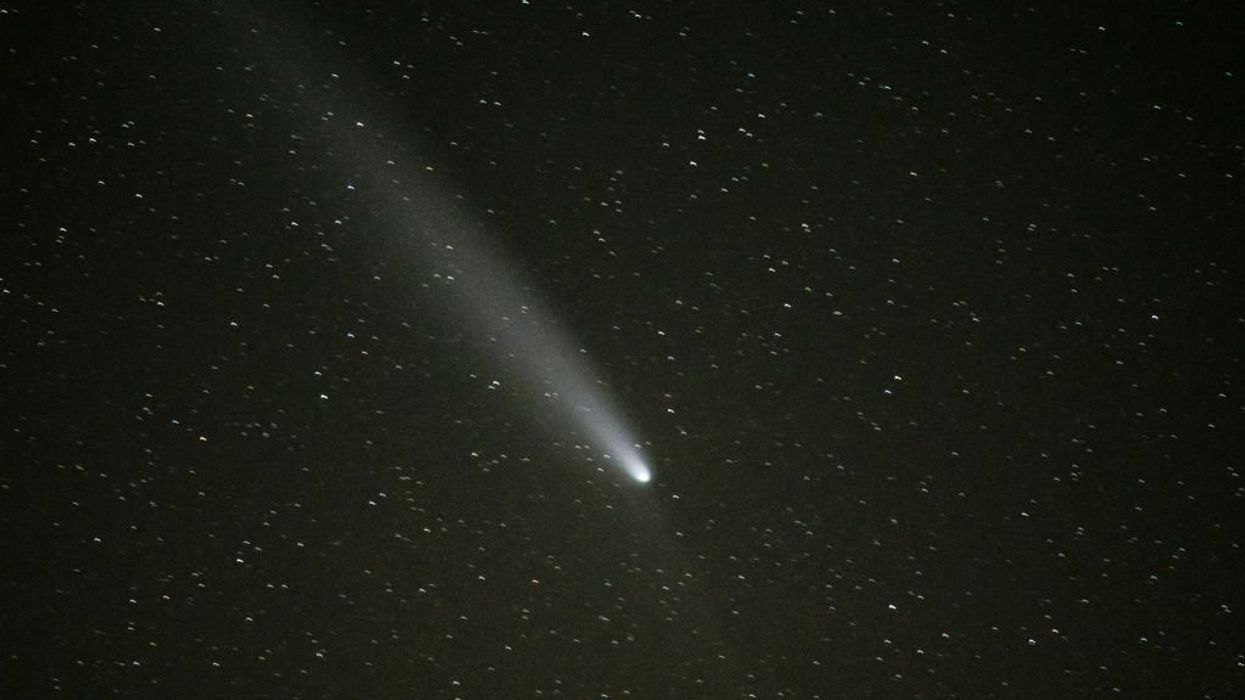
Photo by MADS CLAUS RASMUSSEN/Ritzau Scanpix/AFP via Getty Images

A father-daughter team of civilian scientists decoded the message more than a year after it was received by observatories.
A signal picked up by three observatories in 2023 has finally been decoded. The message left scientific teams with more questions than answers.
In May 2023, observatories captured a signal containing an alien-like message, and the raw data was uploaded to the internet for all to comb through.
Ken Chaffin and his daughter Keli obtained the data and worked on decoding the message. While Keli said she initially had no plans to join the effort, she quickly became mesmerized once she realized its scope.
The duo then worked for nearly a year, reportedly spending thousands of hours experimenting with various ideas and math simulations to figure it out. They uncovered a visualization of what appears to be five amino acids, but it is unclear what they represent. The visual is only displayed for about one-tenth of a second, but outlets have presented it as a video on loop, which may have caused some confusion.
"The original image that looks like a star map has always given me the appearance of biological life-forms," Keli Chaffin said in an email to CNN. "[A] lot of members have seen a mouse, a starfish, or an elephant."
Despite the message coming from outer space and being described by outlets as alien-like, it certainly originated from mankind.
The signal came from the SETI Institute in California, which, in 2023, decided to simulate the scenario of receiving a coded message from aliens or an unknown source in space. The signal was realistically sent from Mars to Earth by the ExoMars Trace Gas Orbiter, a satellite that measures methane and atmospheric gases around Mars.
The message traveled through space for a reported 16 minutes before being captured by the Allen Telescope Array in Northern California, the Robert C. Byrd Green Bank Telescope, and the Medicina Radio Astronomical Station near Bologna, Italy.
The raw data had to be extracted from a purposeful entanglement of other data from the Mars spacecraft, and it took about 10 days to download and convert it into a visual format.
'I had no idea what the message would show or say.'
"I knew I had the skills to decode the message," Ken Chaffin said, stating that he has decades of work with the cellular automata computation model.
Cellular automata is a grid of cells in a checkerboard pattern that can show any number of patterns depending on which cells are "on" or "off." Depending on the grid's rules, it can depict static patterns, repeating patterns, or patterns that appear to be moving across the grid.
The Chaffins ran what they saw on the "star map" as cellular automata simulations and eventually generated the image of the amino acids.
"I had no idea what the message would show or say," Ken Chaffin added. "I suspected that it might have something to do with life."
He said it became clear once he saw the image that it was amino acids, recognizing them from chemistry class.
Chaffin has theorized that the message could represent hydrogen, carbon, nitrogen, and oxygen being transported through space to later be assembled into a life; a very interesting message were it actually from nonhumans.
Like Blaze News? Bypass the censors, sign up for our newsletters, and get stories like this direct to your inbox. Sign up here!
Andrew Chapados